What you’ll learn in this Chinese Potsticker recipe:
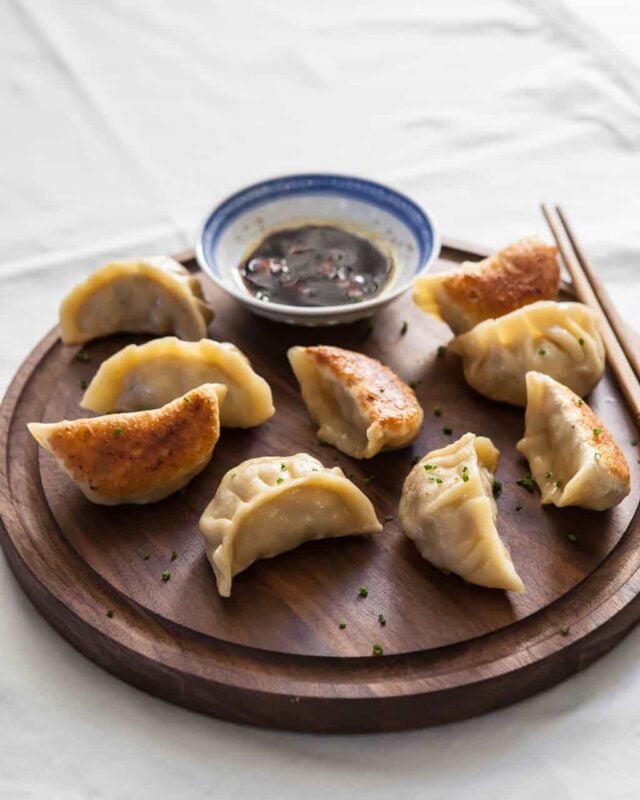
The perfect potstickers, whether you are making Korean Guun-Mandu, Japanese Yaki-Gyōza or Chinese Guōtiē (Mandarin) / Wortip (Cantonese) are pan fried, crisp-crunchy bottoms without being greasy, and steamed, flavorful filling that’s not soggy. The dumpling skin has the perfect bite to it, and the folds of the potsticker are not gummy or too thick.
This is my Mom’s hot-water dough recipe. We’ll show you step by step how to make the wrappers from scratch (all you need is 3 ingredients, a bowl, spoon & rolling pin!), how to perfectly fold the crescent shaped dumplings and how to cook the dumplings so they turn out neither too greasy nor soggy.
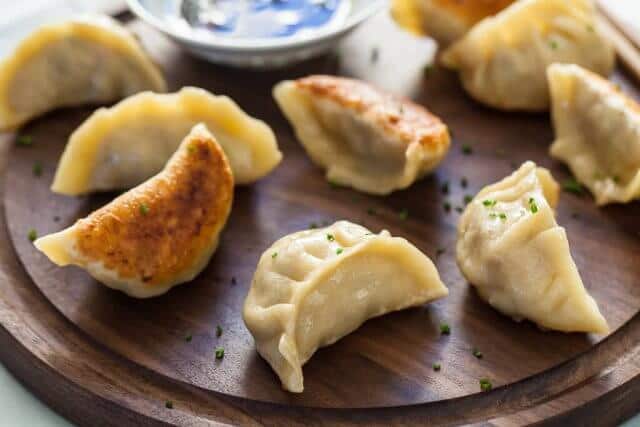
The perfect dumpling wrapper uses both hot water AND cold water. Adding boiling hot water to flour cooks the flour just enough to denature the protein and prevent much of the gluten from forming. Asian dumplings wrappers don’t need a lot of gluten – we want our wrappers to be soft, relaxed enough to fold easily, but still with enough structure to hold its shape. The right combination of hot water and cold water will do the trick. Too much hot water and the dumplings will sag and be too soft. Too little hot water will make the dumplings too chewy.
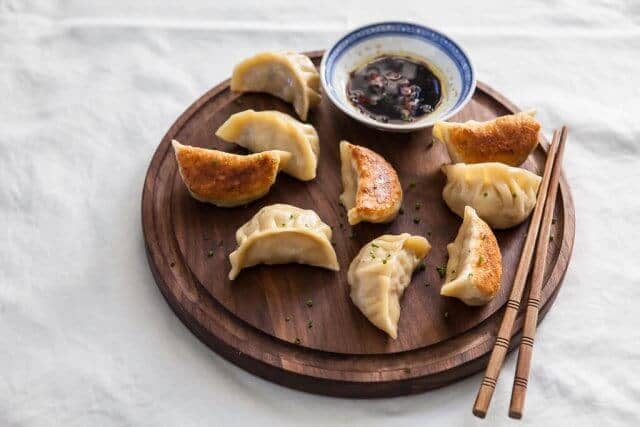
There are only 3 ingredients to homemade potsticker wrappers – and even one of these ingredients is optional.
Flour + Salt + Water (2/3 cup boiling, 1/3 cold)
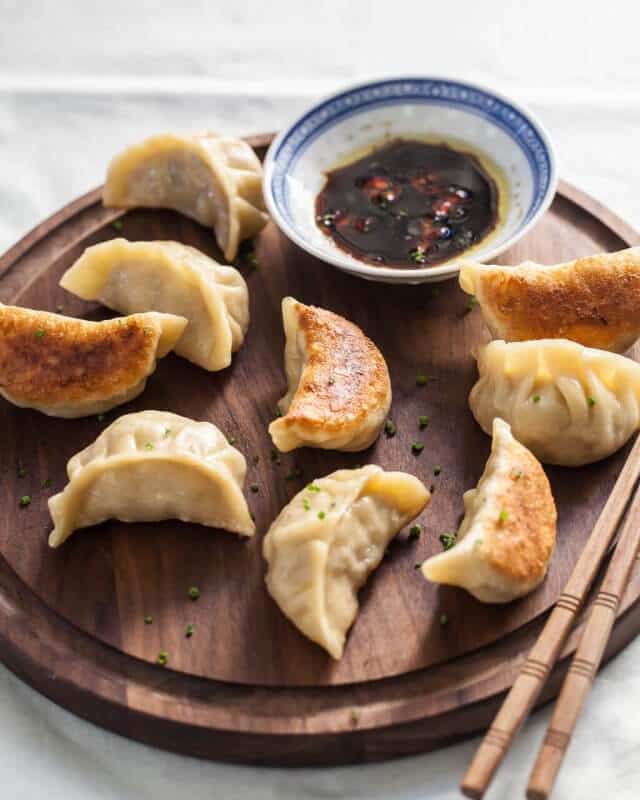
Ingredients
2 1/2 cups all-purpose flour (300 gr), plus more for dusting, if needed
1/4 teaspoon salt
2/3 cup boiling hot water
1/3 cup cold water
To a large bowl, measure in the flour and salt, give it a little stir.
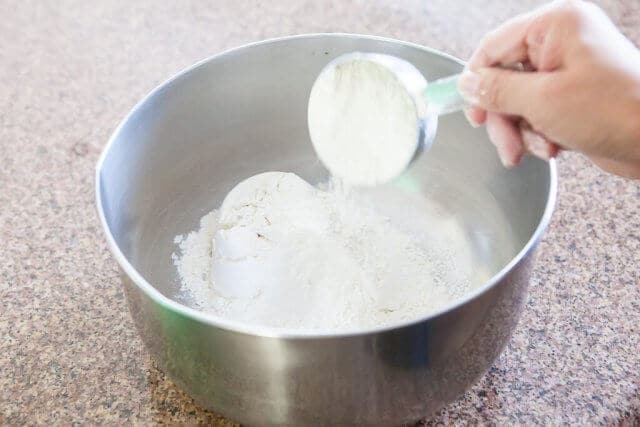
Add the just-boiled hot water (tip: water in a coffee cup, microwaved until just about to boil is just fine)
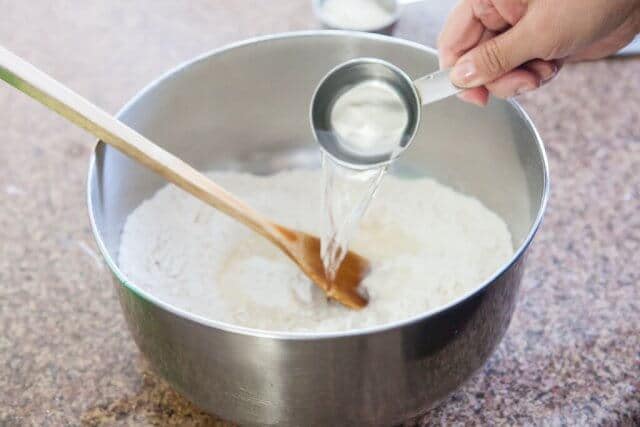
Quickly stir with chopsticks or a wooden spoon.
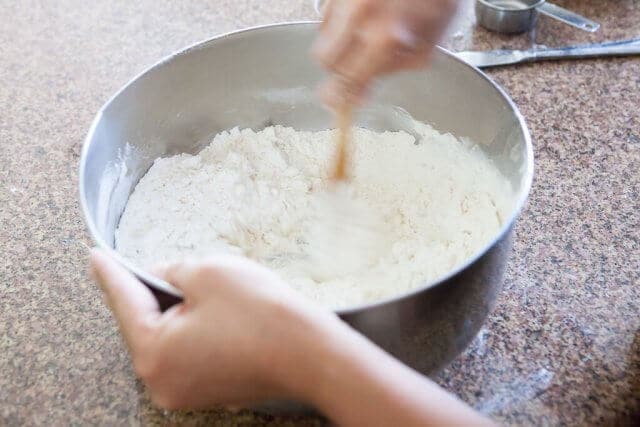
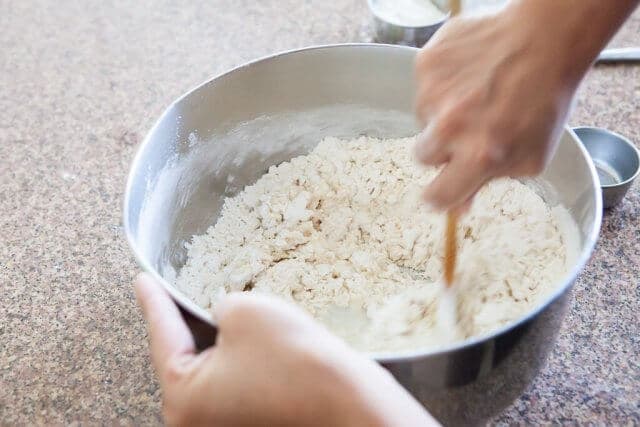
Once it becomes a crumbly mixture, add in the cold water (tip: use ice-cold water, or water from your refrigerator)
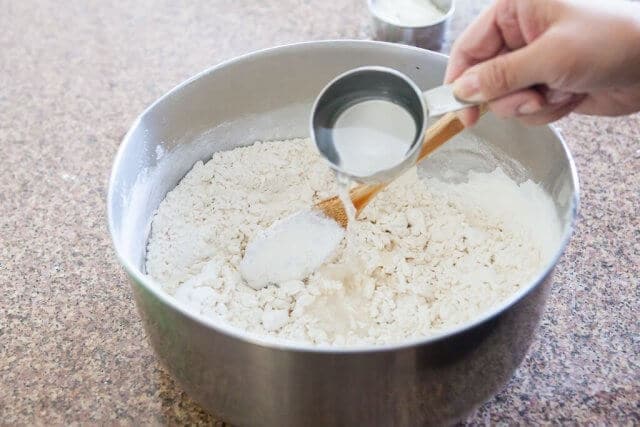
Quickly stir vigorously.
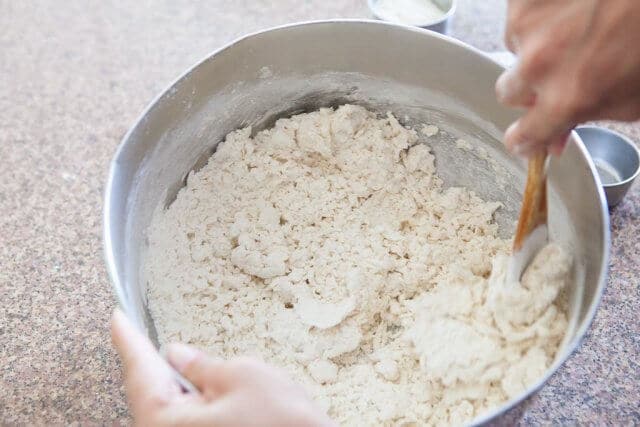
Until the flour becomes a scraggly mess.

Put your wooden spoon down and it’s time to work the dough with your hands. Begin kneading the dough in the bowl, working to pick up all of the dough on the sides of the bowl. Use the heel of your hand to knead.

This should take 2 minutes. You’ll see the dough turn from crumbly to forming a large ball of dough.
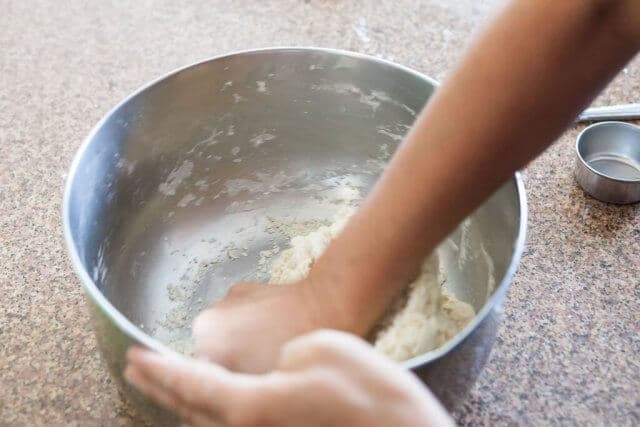
Once you’ve got a rough ball of dough (and there’s barely any dough left in the bowl) turn the dough out onto your clean work surface to continue kneading. You shouldn’t need any additional flour on your counter, the hot water makes the dough much easier to work with and less sticky. But, if the dough really sticks to your counter, feel free to use a small amount of flour to dust the surface.
Remember to use the heel of your hands and the meaty parts of your thumbs. In kneading, there are no fingers involved – you can put your fingers away

Xiao Long Bao is one of the most famous Chinese ste
What you’ll learn: How to make a vegetarian versi
The Chinese culture is filled with food traditions
Ancient Chinese Stir Fry Secrets (at home) Restaura
New friend, Deb Puchalla, who is Editor in Chief of
Copyright © 2000-2018.New Asian Restaurant News All rights reserved.